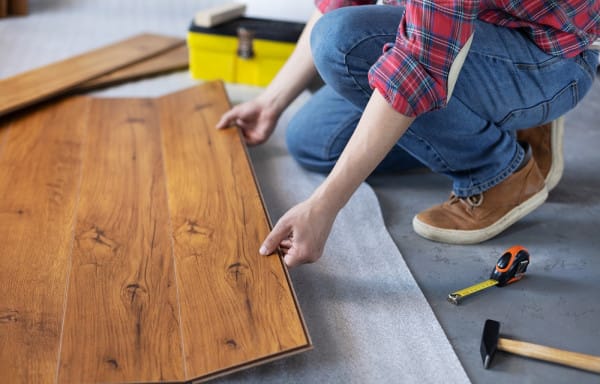Read Before you Install Floating Floor Boards

What do You need to Know About Floating Boards Before Installing?
You are looking for a flooring solution that is within your budget but still offers high-quality, underfoot comfort, and stylish design. You can look for your answers on flooringdomain.com. It is a platform that helps you find a reliable local flooring store from its wide database. It is an online flooring directory that plays the role of a marketplace, where people can find flooring professionals from across Australia.
If you are seeking for floorboards installation, material supply, cleaning/maintenance, or repairs flooringdomain.com has everything covered. In this post, let’s discuss floating floorboards.
Why floating boards don’t move?
Floating boards are hard flooring style, which is specially engineered for easy installation. They rest over a subfloor with friction and gravity. They stick with one another like a puzzle. Each floorboard has a joinery system that locks together. This stops the floorboard system to shift or come apart when they sit on top of the subfloor. Floating boards don’t get fixed to the subfloor, so it is named ‘Floating’. There are some reasons they don’t move.
- Weight - A single floorboard weighs less but a lot of boards locked together within a room create significant weight, which makes them move accidentally far difficult.
- Friction - The floating floors get fitted over an underlay, which provides noise or thermal benefits and even creates friction on the underside preventing them from slipping.
- Locking - The boards get locked with one another [tongue & groove system] and this united strength supports each boards adjoining companion.
Floating board types
- Engineered timber - Sustainable hardwood layers are used and real hardwood veneers give it a stylish finishing.
- Laminate - Laminate floating boards are ideal for busy homes. They are extremely strong and stylish.
- Vinyl - A little softer than the other two types but quiet underfoot, more comfortable and averts moisture damage.
Benefits of floating floors
- Versatile - You get to choose from a vast range of materials and styles. It can be installed above any flooring style -timber, vinyl, or concrete.
- Easy installation - DIY is possible for homeowners on a tight budget but professional help is recommended.
- Cost-efficient - Floating floors are cheaper than solid hardwood.
- Expansion & contraction - Some flooring gets warped due to humidity but the floating floor perimeters have small gaps, which accommodates the expansion and contraction.
If you are planning to install floating boards then determine your property needs and lifestyle. For example, if your home has high traffic and moisture then choose the right material. The boards are available in a variety of sizes with a finished surface. Therefore, there is no requirement for sanding or sealing.
